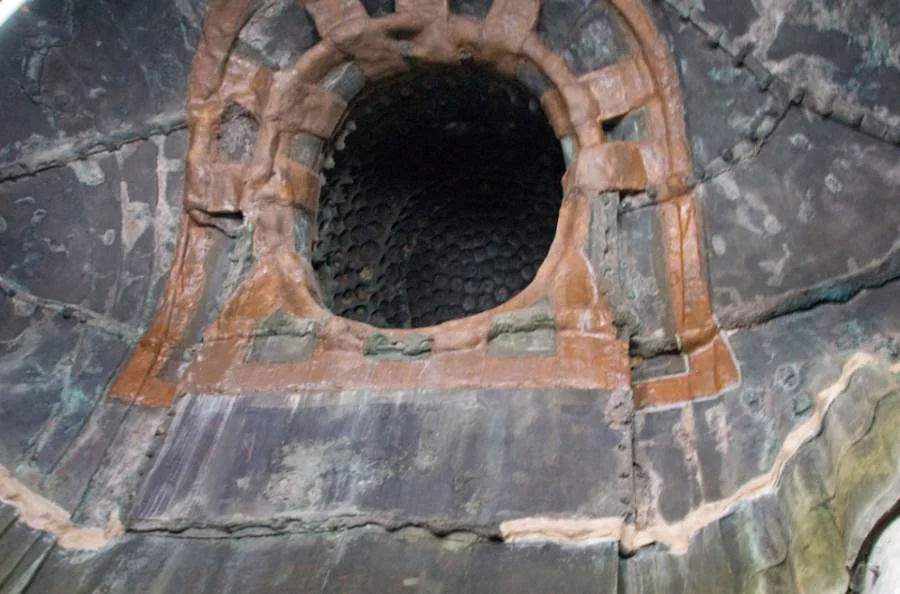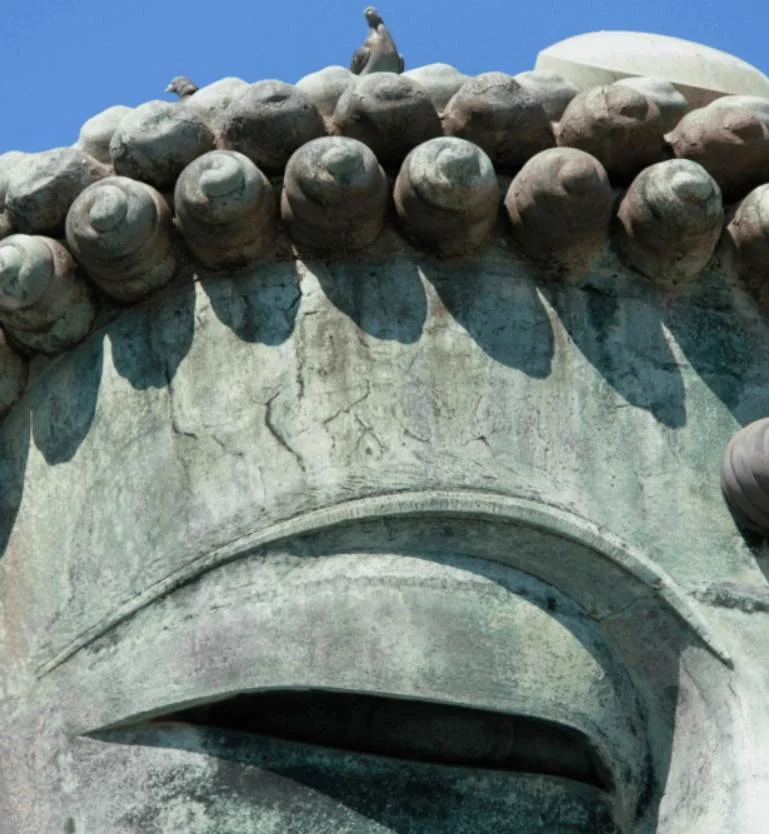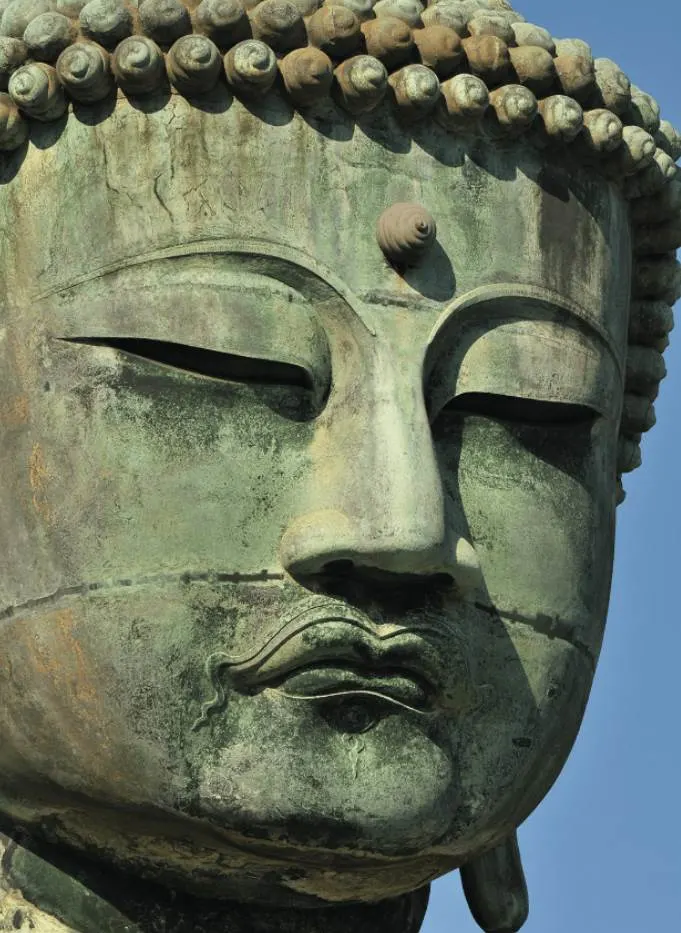In this list, we’re going to take a closer look at some Great Buddha of Kamakura facts, one of the most famous icons of Japan.
The Great Buddha of Kamakura is located just outside a temple complex called Taiizan Kotokuin Shojosenji, which is also referred to as Kōtoku-in.
The temple complex can be found in the city of Kamakura in the Kanagawa Prefecture, Japan.
The Great Buddha of Kamakura, called Daibutsu in Japanese, is one of the 22 historical monuments included in the Kamakura proposal of inclusion in the UNESCO World Heritage sites list.
1. How old is the Great Buddha of Kamakura?
Initially, there was a large wooden Buddha on the site where the Great Buddha Of Kamakura can be found.
It took nearly 10 years to complete the wooden structure back in 1243. Unfortunately, the hall it was in was destroyed by a huge storm in 1248, severely damaging the wooden statue.
Because of this event, it was suggested to build a bronze statue instead which would be resistant to weather conditions, and a sort of “crowdfunding” was set up to raise money for the project.
The statue of The Great Buddha of Kamakura as we know it today was completed in the year 1252.

2. Multiple storms and disaster
In its initial period, The Great Buddha of Kamakura was in some sort of hall that was built around the statue.

Because of multiple storms and other natural disasters, the halls were always destroyed, yet rebuilt.
The final building The Great Buddha of Kamakura has ever been in was destroyed by a tsunami following the 1498 Meiō Nankaidō earthquake.
It’s one of the most dramatic natural even that ever happened in Japan and even though the exact number was hard to determine at that time, between 5000 and 41,000 casualties were reported.
Ever since the Great Buddha of Kamakura has always remained in the open air.
3. More drama in 1923
In 1923, another great earthquake referred to as the Great Kanto earthquake destroyed the base that the Great Buddha is sitting on.
In 1925, the restoration needed was completed.
Finally, in 1960 they started another set of repairs to strengthen the neck of the statue and make it resistant to powerful earthquakes like the one of Kanto.

4. Who created the Great Buddha of Kamakura?
It’s not certain who created the statue. All evidence points towards Ōno Gorōemon or Tanji Hisatomo.
Both were leading casters working in and around Kamakura at the time the Great Buddha was built.
Ōno Gorōemon was part of the Kei School which created Buddhist Sculptures that flourished in the Kamakura period.
Unfortunately, very little is known about the life of the two presumed creators of The Great Buddha of Kamakura.
5. The Great Buddha Of Kamakura measurements
The inside of the statue is hollow, and if you visit the site you can look inside of it.

Apart from this, here are the impressive details about the size and weight of the Great Buddha:
- Weight: 121 tonnes (267,000 pounds)
- Height: 13.35 metres (43.8 ft)
- Length of Face: 2.35 meters (7 ft 9 in)
- Length of Eye: 1.0 meter (3 ft 3 in)
- Length of Mouth: 0.82 meters (2 ft 8 in)
- Length of Ear: 1.90 meters (6 ft 3 in)
- Length from knee to knee: 9.10 meters (29.9 ft)
- Circumference of thumb: 0.85 meters (2 ft 9 in)
To give reference to the size, here you can see a picture of a pigeon sitting on top of the great bronze statue:

6. Golden Buddha
At one point, the Great Buddha of Kamakura was gilded. This probably happened during the Muromachi period which lasted from approximately 1336 until 1573.
Traces of the gold that used to cover the Great Buddha of Kamakura can still be found around the statue’s ears.
7. Be warned when entering
Buddhism is a life philosophy that respects silence and calm. Therefore, a remarkable sign is put at the entrance for visitors to see.
This is what it says:
Stranger, whosoever thou art and whatsoever be thy creed when thou enterest this sanctuary remember thou treadest upon ground hallowed by the worship of ages. This is the Temple of Buddha and the gate of the eternal, and should, therefore, be entered with reverence.
8. Jōdo-shū Buddhist temple
The Buddhist complex that The Great Buddha of Kamakura stands on is part of Jōdo Buddhism.
This is a branch of Pure Land Buddhism which was established in Japan in 1175 and is one of the most practiced forms of Buddhism in Japan.
9. The Amida Buddha
Amitābha also referred to as Amida, is a celestial Buddha according to the scriptures of Mahayana Buddhism.
According to these scriptures, the Amida Buddha, and therefore also The Great Buddha of Kamakura, brings infinite merit.
The Amida Buddha is called “The Buddha of Immeasurable Light and Life.”

